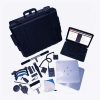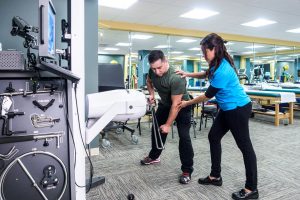
Top 10 Ways To Grow Your Clinic's Workers' Comp Business
Practice ManagementEmployers’ overall claims costs continue to rise, and Workers' Comp therapy is in high demand. Payers who handle these claims are eager to get their clients back to work and function as efficiently as possible. This presents a tremendous opportunity for your clinic.
Increasing patient visit volume is the key to the health and success of today’s clinic. Earning more physician referrals and driving better patient engagement and retention are the primary avenues for achieving this. But there’s another powerful referral stream that you shouldn’t ignore – one which, statistically, brings in a significant number of treatments per patient: Workers’ Compensation.
Employers’ overall claims costs continue to rise, and Workers’ Comp therapy is in high demand. Payers who handle these claims are eager to get their clients back to work and function as efficiently as possible. This presents a tremendous opportunity for the savvy clinic manager to establish his or her clinic as the ‘go-to’ for the best, most efficient workers comp therapy in the area.
But how do you win and bring in that new Workers’ Comp business? After all, that’s the starting point. Let’s explore a few proven strategies that are working for thriving clinics.
1. Get to know the case managers in your area.
Case managers often direct injured workers to the most appropriate clinics for the physical therapy they need. They can advocate for additional treatment when it’s justified. Contact them when you are working with their client, to explain your plan of care and invite them to your clinic to see what makes your clinic unique in how you treat injured workers. And do the research to dig up and contact the case managers who you don’t know yet. They are one of your most powerful and direct sources for new business.
2. Show objective evidence of progress in functional terms that relate to the job.
Reporting strength gains is good, but more important is to match those gains to specific job requirements. Share that information with the physician and the case manager. Mastering the best practices and the best reporting technology will help your clinic stand out from the rest and build unique value in the eyes of referrers.
3. Offer a customized work conditioning program to match the specific worker’s job so that you differentiate your services from other clinics that offer general work conditioning
Aerobic conditioning and endurance exercises are important, but should be combined with job specific simulations. Set up work task simulations so that clients can practice with the specific muscle groups and body mechanics needed to return to their job. Individualize the conditioning to better motivate the patient for full participation. Tools like the PrimusRS are specifically designed to help replicate hundreds of different jobs, and are a great way to offer unique, job-specific work conditioning.
4. Perform objective testing that can help show evidence of the client’s effort level.
Case managers and claims adjusters want to know if a client is putting forth good, consistent effort, especially when you are recommending continued treatment. Identifying the client’s effort level is not always easy, but there are some well documented strength tests and measurement technologies that can yield objective evidence to add to your professional observations.
5. Start work conditioning early, even if at a low level, to quickly move the client from a patient mindset to being a worker.
The longer a person is off work due to injury, the more difficult it becomes to return to work. Prevent deconditioning (which occurs due to the disruption of normal daily routines) by beginning a functional work conditioning program as soon as possible following acute injury. Move from isolated exercises that focus on the injured area to full integration of total body exercise and work simulation. Following best practices and protocols available from industry experts.
6. Show proof of progress to your clients so that they know they are improving even if progress is slow.
Objective measures that show you are doing a little better today than you did yesterday, or last week, can go a long way in helping to maintain a positive attitude. Set measurable goals for each treatment session that will push the client’s workout a little higher each day. Clear, visual reporting and an interactive rehab feedback are very powerful in keeping patients motivated.
7. Focus on what the client CAN do, and not on what they cannot do.
Explain to the case manager and physician what the client can do now that they have been attending work conditioning. Boost the clients’ confidence in their ability to safely return to work by helping them understand what they can now do safely and effectively.
8. Talk to and establish relationships with the employers in your area.
Let the HR department, as well as medical staff, know what your clinic has to offer. Talk to safety managers about your ability to offer pre-conditioning to teach proper body mechanics for job tasks before injuries or bad habits occur. Consider on-site services at the employer’s facility to help prevent injuries, as well as learn more about their jobs so you can better treat their injured workers.
9. Offer FCEs, or similar work evaluations.
Doing a full FCE takes special training. But if you don’t get that training and have to turn away referrals for FCEs, you’ll never know how many other workers’ comp referrals you are losing. Even if you don’t offer a full FCE, considering offering shorter and more job specific return-to-work evaluations. Case managers may ask for an FCE, but what they really want to know is whether or not this client can handle their job.
10. Partner with a company that can properly develop Post Offer Employment Testing.
Companies that can perform a proper job analysis and then develop a test to match the essential job functions, can help you strengthen your relationship with local employers. If you are able to properly test their worker candidates, you will also be in a position to recondition their injured workers and evaluate their ability to safely return to the job. Post Offer Employment Testing can be very legally defensible as long as the testing protocol is validated as job specific.





